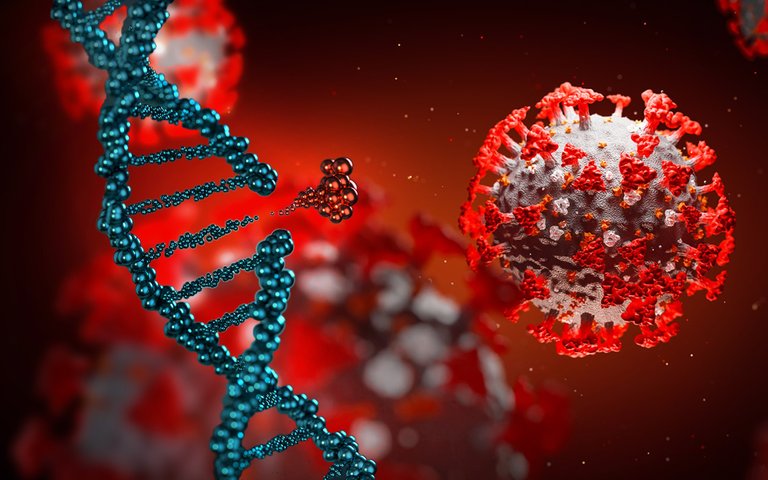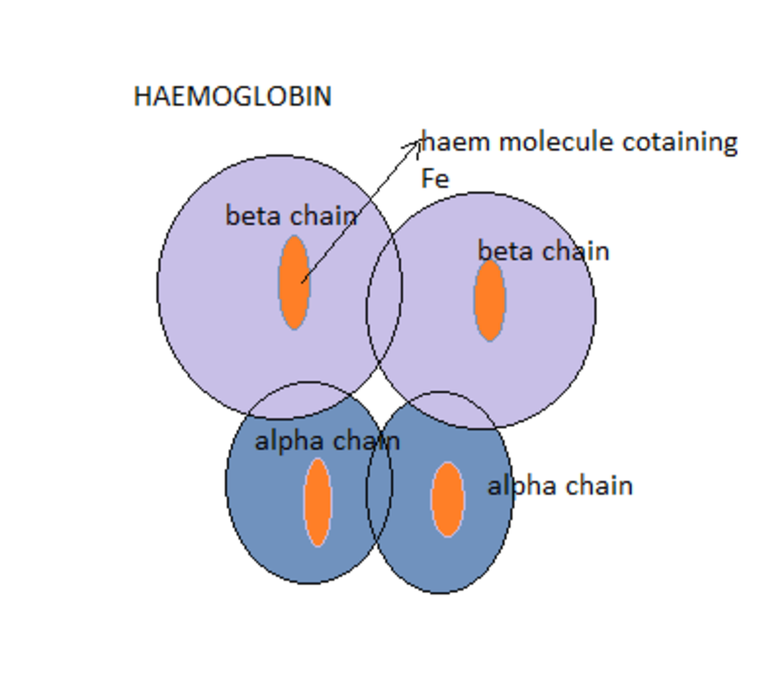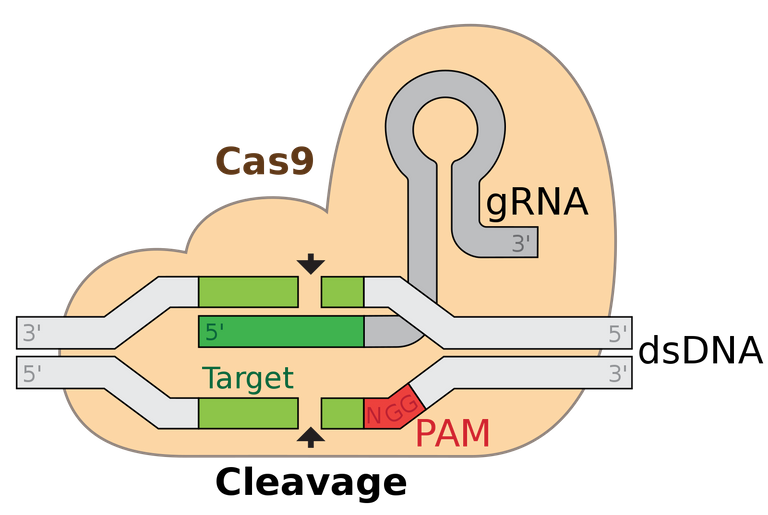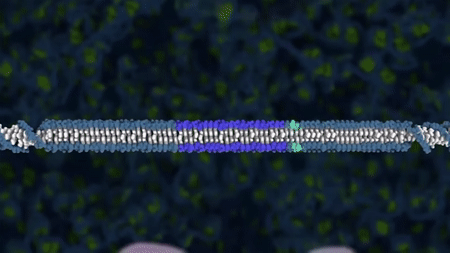A lot has been going on in the science community and Indeed, it is evidence of how well research impacts society positively. Just not too long ago, the news about a therapy (The CAR T-cell therapy) that could effectively eliminate cancer cells made a massive wave on the internet.
It didn't take long, a monoclonal antibody-based drug - Dostarlimab was also announced to have achieved a hundred percent success rate in the treatment of colon cancer in some patients used for the clinical trials. You can read more about these two therapies, in the three posts I have already crafted out in their simplest form below:
•Latest ground breaking findings from Cancer studies thus far; There is hope for our generation
Reading the three posts above will sure marvel you. A lot has been going on and the best we could do is to get the necessary information. Your knowledge about something could help others who are not informed. Getting the right information at the right time can save a lot of people in dire need. Today's discussion will dwell on the recent findings about a drug with gene editing potential.

Gene editing using CRISPR technology
Before we delve into the discussion about the drug, it will not be out of place to talk about the technology behind it and how it all started. You cannot talk about genetic editing without the mention of two molecular biologist - Jennifer Doudna and Emmanuelle Charpentier. Their ingenious work on gene editing technology earned them Nobel prize in chemistry in the year 2020 by The Royal Swedish Academy of Sciences
They were able to develop a method for genome editing, a technology otherwise referred to as the CRISPR/Cas9 genetic scissors. As we go deeper into our discussion, we explain in details how this technology works and what it really entails. It is always a norm in science, for you to understand the abnormal, you first need to know the norm. A good understanding of the normal gives you the confidence to detect an abnormality.
Researchers need to modify genes in cells if they are to find out about life’s inner workings. This used to be time-consuming, difficult and sometimes impossible work. Using the CRISPR/Cas9 genetic scissors, it is now possible to change the code of life over the course of a few weeks.
Genetic diseases are very difficult to treat permanently because they are naturally associated with genes which of course are the codes of life. Genes determine what we inherit and express from our parents. Alterations of codes in genes are the reasons for genetic diseases and mostly Known one is haemoglobinopathies (a group of disease that is associated with the oxygen carrying molecule in the body).
One notable example of haemoglobinopathies is Sickle cell disease. This disease which is genetically acquired, occurs as a result of a mutation in the HBB gene which is mainly responsible for making a portion of the haemoglobin chain. This chain naturally is made up of two alpha and two beta globin chains. When the mutation (substitution) occurs in the Beta chain, that is when it leads to sickle cell disease.

Haemoglobin representation
The genetic basis of sickle cell disease is as a result of the homozygous substitution of the valine for glutamate in the Beta chain of the haemoglobin molecule. This results to the production of haemoglobin SS (Hb SS) which is highly unstable and forms sickle shape at low oxygen tension. The frequent sickling of this molecule is the genesis of the painful episodes experienced by the victims.
Other mutations in the haemoglobin gene (HBB) can as well lead to the formation of other types and variants of haemoglobins such as Haemoglobin C (HbC), Haemoglobin E (HbE), and even Beta thalassemia (abnormal low level of beta haemoglobin). Because these diseases are genetic in nature, the only way they can be cured permanently would be to alter and knock off the abnormal gene that is responsible for the production of the abnormal haemoglobin and at the same time replacing it with a normal gene.
Knocking off genes from a genome is not as simple as it sounds, especially when it has to do with humans. Chapentier's first discovery while working on a highly virulent bacteria known as Streptococcus pyogens unveiled the idea of gene editing. Her idea of gene editing came about when she was doing a research to understand how bacteria fight viral infections.
Bacteria have an adaptive immune system that allows them to detect viruses and kill them. This defense mechanism is called CRISPR/Cas9. They defend against against viruses like bacteriophage (a virus that infects bacteria). Associated with this molecule is the protein called Cas9. This protein is responsible for looking out for the abnormal DNA and then cleave or cut the viral DNA off thus, degrades and renders it inactive. We will look deeply into this later.
One remarkable molecule Chapentier discovered to be part of the defense mechanism of bacteria was tracrRNA. Her collaboration with Doudna led them to the discovery of the Gene editing scissors in 2012 after they modified and made it much more easier to be used. Since they discovered this molecule, their application has been tremendous and this technology has been applied in editing of plants and even animal genes. Notably, their application has been seen to produce genetically engineered crops that are highly resistant to diseases and pests.
Before now, gene editing was a pretty tough process that requires not only time but also a rigorous processes and one of which is amplification using a complex technique know as Polymerase chain reaction (PCR). Their discovery only but made things much more easier than ever before. What if we could channel this discovery into treating genetic diseases in humans, wouldn't that be a great solution to the permanent cure for them? Let us take a deeper dive into understanding how this CRISPR/Cas9 operates.
Principle behind CRISPR/Cas9 genetic scissors
Probably you have been wondering if CRISPR/Cas9 is just a name or an abbreviation. It is an actually an abbreviation and CRISPR stands for Clustered Regularly Interspaced Short Palindromic Repeats while Cas9 stands for CRISPR-associated protein 9 sourced from either staphylococcus or streptococcus bacteria.
These technology as we have earlier explained helps slicing of any diseased or problematic DNA at any specific point in gene sequences. This technology allows scientist to delete and insert genes at choice points in the DNA.
The defense mechanism CRISPR/Cas9 is used by bacteria for defense just like we earlier explained above and it works in a specific manner. When a virus wants to infect a living cell, it fir penetrate and inject is DNA into its host. Some bacteria cells are able to counter this attack while some may not.

You can read more about virus infection process in bacteria here - Bacteriophage- the virus that kills bacteria : Its use in treatment of drug resistant bacterial infection, it will sure give you a better understanding of how viruses penetrate bacteria cells and the applications of these types of viruses in science.
After the viral injection of the DNA, in a bacterium, the CRISPR system allows the DNA to be plucked out the virus and then inserted bit by bits into the chromosomes of the bacteria at various locations/sites known as CRISPR. This mechanism functions to allow cells to record all the viruses they have been exposed to overtime. This memory is usually passed on to other progenies so that it allows the cells to keep records of infections. This is one reason the CRISPR system is a form of adaptive immunity for bacteria cells.
After the bits of the viral DNA has been inserted, the bacteria cell then makes a copy of Ribonucleic Acid (RNA) that is an exact copy of the viral DNA because it naturally allows an interaction between matching sequence of DNA. These bits of RNA in the CRISPR locus then associate the bind with a protein molecule called Cas9. These results to a complex formation.

The complex formed acts like a sentinel (substance that acts as an indicator of a disease or acts as a watch guard). This complex does the job of scanning the entire DNA of the bacteria cells to find sites that matches the sequence in its bound RNA.
When it finds such sites on the bacteria DNA sequence, it associates with it and then this allows the Cas9 which acts as a nuclease to cleave or cut off the viral DNA with high precision. Isn't this amazing? This complex continues to scan all the DNA of the bacteria cell and cleaving every of the viral DNA until there is none left.
In another way, the explanation could go thus:
•Scientists engineer a piece of RNA that is a match for the DNA they want to edit. This is called the guide RNA.
• The guide RNA binds the target DNA. An enzyme called Cas9 binds to a piece of DNA and temporarily unwinds a section of the DNA.
• It then Cuts the DNA. If the guide RNA matches a section of the DNA, the Cas9 enzyme cuts both strands of the DNA double helix.
• Repair ad edit the DNA. Machinery inside the cell rushes to fix the broken DNA. One repair process uses a similar-looking, unbroken piece of DNA as a template to stitch the broken pieces back together.
• Scientists can then introduce tailor-made DNA into the cell — tricking the repair machinery into using the engineered DNA as the template for stitching together the broken pieces.
Human cells have the capacity of healing any break in DNA and this it does by attaching back the two ends of the DNA or by inserting a new complementary strand of DNA into the break. So far this CRISPR technology has seen its numerous application in genome engineering.
The applications of CRISPR technology
Because this Cas9-RNA sentinel complex is programmable to make precise breaks in double stranded DNAs, it thus allows scientist to reprogram it into further use and various application. So far, this CRISPR technology has been used to change DNA in mice and monkeys.
Even Chinese scientist have been to show and prove that they could use the technology to change certain genes in human embryos. Similarly, some scientist were able to show that they could change and remove the DNA of integrated HIV virus from an infected human cell.
If all the above are possible even to the point of editing human genes, then it raises serious concern for ethical considerations just as human cloning did in time past.
Treatment of genetic diseases is one of the fast rising area of applications of the CRISPR technology. The CRISPR is programmed to make cuts in the DNA of cells to remove any particular gene causing disease. For example, in future the possibility of removing the mutated gene causing sickle cell disease might be possible.

Once the double stranded damage is made with the CRISPR, repair can then be induced with the new genetic information and this will simply solve the genetic problem once and for all. Lately, this technology has been seen in use in drug manufacturing companies to treat disease like cancer.
Cancer biologists began systematically altering every gene in cancer cells to see which ones mattered to the disease. Researchers at KSQ Therapeutics, also in Cambridge, used CRISPR to discover a gene that is essential for the growth of certain tumors, for example, and last year, they began a clinical trial of a drug that blocks the gene.
One very important thing we need to understand about this technology, with specific attention to the nuclease protein Cas9 is that, it mostly seeks out to repeating strands in genetic sequences (CRISPR),and then cut the DNA strand at that point thereby allowing the new DNA strand with better information to be inserted. It consequently turns off and deletes the already existing strand so as to alter the genetic characteristics of the material.
The wide acceptance and use of the CRISPR technology of genome editing can be attributed to the fact that, it is much more robust and easier to use compared to other methods of genomic engineering. Drug manufacturing sector was not left out of the technology.
In a $900 million collaboration, rare disease specialist Vertex and CRISPR Therapeutics developed the therapy, dubbed exa-cel (short for exagamglogene autotemcel. It has already amassed promising evidence that it can help patients with beta thalassemia and sickle cell disease (SCD).
The collaboration recorded a huge success after they administered their exa-cel therapy to 75 patients with two major types of haemoglobinopathies - beta thalassemia; transfusion dependent thalassemia, TDT (44patients) and sickle cell disease (31 patients).
Data from the report revealed that all of the patient suffering sickle cell disease characterized by vaso-occlusive crises were totally treated and with no recurrent episodes. Furthermore, out of the 44 patients with TDT, 42 were treated and transfusion free after infusion with the drug therapy while the remaining 2 patients who were not transfusion free experienced a remarkable 75% and 89% reductions in transfusion volume.
With the approval from the FDA, the first of its kind gene editing CRISPR technology based drug could be released soon. We could see the sickle cell disease become a thing of the past just with this technology.
In the area of diagnosis, recently a CRISPR chip was invented by Dr. Kiana Aran. This Chip simply works based on the the CRISPR technology and basically detects mutation in a genetic sample thus, saving a whole lot of time for the clinicians in treatment.
With this chip, one can easily tell if a patient sample has any genetic disease or mutation. This is a great milestone in CRISPR technology and with all hopes raised high, a lot of individuals with one genetic diseases or the other can be cure permanently.
We could be looking at the release of gene editing drugs come 2023 because from all indications, even though there were some serious adverse events, they were all later resolved. In a nutshell, the side effects are not fatal.
Indeed, there are better days ahead!
PS: The video source is free for use, thus under public domain.
References
•What are genome editing and CRISPR-Cas9?
•CRISPR, 10 Years On: Learning to Rewrite the Code of Life
•New CRISPR-powered device detects genetic mutations in minutes
•EXCLUSIVE: Chinese scientists are creating CRISPR babies
•HIV genes can successfully be removed from cells, scientists find
•The first CRISPR gene-editing drug is coming—possibly as soon as next year
•Vertex and CRISPR Therapeutics Present New Data on More Patients With Longer Follow-Up Treated With exagamglogene autotemcel (exa-cel) at the 2022 European Hematology Association (EHA) Congress
Genetic Editing will be needed for a lot of genetic related problems and diseases. The ability to find mutated, or faulty gene, unpair and pair with a new genetic information without affecting a perfectly ok DNA is impressive. Hopefully, in few years, it will become ready for diagnostics and would be able to solve Sickle Cell Disease.
While it is fast and easy, cost is one of the reasons why a lot of science technological devices haven't reached mass adoption.
I concur with you on this.
Though most times, competition tend to reduce the cost at the long run.
But for the time being, let the rich flex their muscle.
That's true. The rich in developed countries will flex their muscles, followed by the masses in developed countries, then it would find its way down to developing countries in years or maybe decades. Ventilator is a very good example. If it weren't for Covid-19, so many hospitals in developing countries won't have good, functioning ventilators.
Thanks for this amazing post. I have found it very well written and really clear. Consequently, I have no further comment, but I thought your post deserved a little bit more of engagement!
To be honest, I had to check out the translation of sickle cell in the dictionary. :)
Cheers!
Haha...of a truth it does i must say.
People have interest regardless. But to some extent, I am partly a cause. My engagement is quite reduced since resuming duty. My decision to atleast drop a post a day is to ensure I stay connected with hive. I will be fully back with real time engagement. Health sector is more demanding than what I envisaged while in tertiary school
I am always amazed at how you really keep up the consistent engagement here despite your busy schedule. I have to borrow a leaf from you sir.
I use my time in trains to read and comment :)
Note that this was not a criticism. I was just sad that there was almost no comment to your post, that definitely deserves them (which is why I decided to drop a few lines).
Yeah, I perfectly understand you sir.
Tanks for all you do🙏
You are welcome!
The rewards earned on this comment will go directly to the people( @gentleshaid ) sharing the post on Twitter as long as they are registered with @poshtoken. Sign up at https://hiveposh.com.
Thanks for your contribution to the STEMsocial community. Feel free to join us on discord to get to know the rest of us!
Please consider delegating to the @stemsocial account (85% of the curation rewards are returned).
Thanks for including @stemsocial as a beneficiary, which gives you stronger support.
Thanks for this amazing post. I have found it very well written and really clear. Consequently, I have no further comment, but I thought your post deserved a little bit more of engagement ;)
Cheers!
Congratulations @cyprianj! You have completed the following achievement on the Hive blockchain and have been rewarded with new badge(s):
Your next target is to reach 1750 replies.
You can view your badges on your board and compare yourself to others in the Ranking
If you no longer want to receive notifications, reply to this comment with the word
STOPSupport the HiveBuzz project. Vote for our proposal!